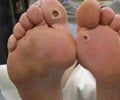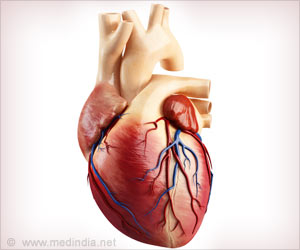Adults who have diabetes and multi-vessel coronary heart disease had a better overall heart related outcomes if they opted for cardiac bypass surgery.

Principal investigator Valentin Fuster, M.D., Ph.D., of Mount Sinai School of Medicine in New York City, will present the study findings on Sunday, Nov. 4, at 7:58 p.m. ET at the American Heart Association's annual meeting in Los Angeles. The findings will appear concurrently online in The New England Journal of Medicine. A companion paper on cost effectiveness will appear online in Circulation.
"These study results confirm that bypass surgery is a better overall treatment option for individuals with diabetes and multi-vessel coronary disease and may assist physicians' efforts to prevent cardiovascular events such as heart attacks and deaths in this high-risk group," explained Gary H. Gibbons, M.D., director of the NHLBI.
In coronary heart disease, plaque builds up inside coronary arteries. This often leads to blocked or reduced blood flow to the heart muscle and can result in chest pain, heart attack, heart failure, and/or erratic heartbeats (arrhythmia). In 2010, nearly 380,000 Americans died from coronary heart disease. Approximately 25 percent to 30 percent of patients needing CABG or PCI have diabetes and multi-vessel coronary heart disease.
In the United States, more than one million procedures (CABG and PCI) are performed each year to restore circulation to patients with blocked arteries.
In CABG, surgeons try to improve blood flow to the heart muscle by using a healthy artery or vein from another part of the body to bypass a blocked coronary artery.
Advertisement
The study, called Future Revascularization Evaluation in Patients with Diabetes Mellitus: Optimal Management of Multivessel Disease (FREEDOM), involved 140 international centers and a total of 1,900 adults enrolled from 2005 to 2010. The participants had diabetes and coronary heart disease that involved narrowing of multiple blood vessels, but not the left main coronary artery, which usually requires immediate treatment with CABG.
Advertisement
During the trial, participants received standard medical care for all major cardiovascular risk factors such as high LDL cholesterol, high blood pressure, and high blood sugar. Participants also were counseled about lifestyle choices such as smoking cessation, diet, and regular exercise.
After five years, the CABG group had a lower combined rate of strokes, heart attacks, and deaths (18.7 percent) than the PCI group (26.6 percent). Strokes, which are a well-known risk of bypass surgery, occurred slightly more often in the CABG group (5.2 percent) than in the PCI group (2.4 percent). However, more people died from any cause in the PCI group (16.3 percent) than in the CABG group (10.9 percent). The survival advantage of CABG over PCI was consistent regardless of race, gender, number of blocked vessels, or disease severity.
"The advantages of CABG over PCI were striking in this trial and could change treatment recommendations for thousands of individuals with diabetes and heart disease," said Fuster.
Source-Eurekalert













